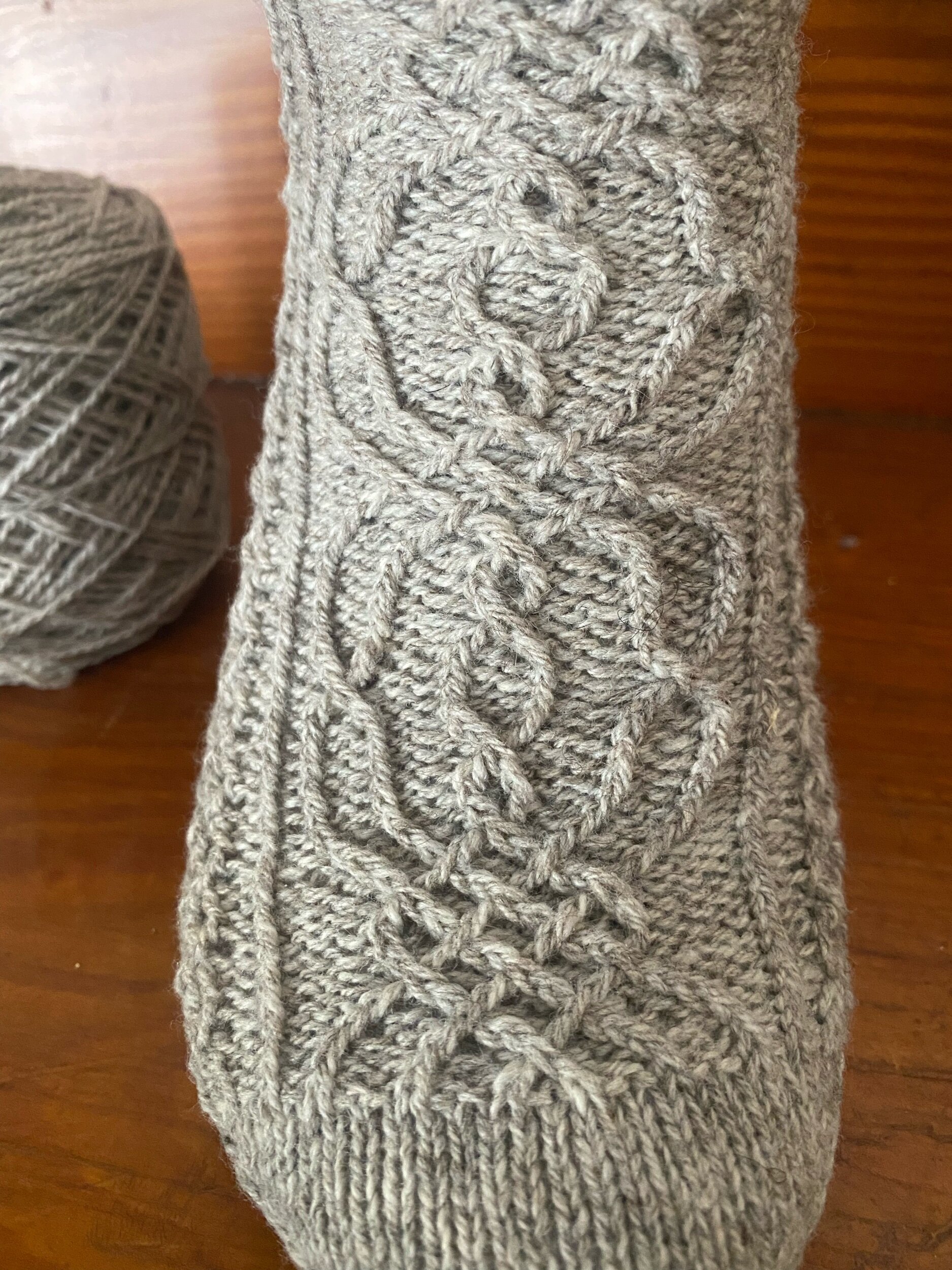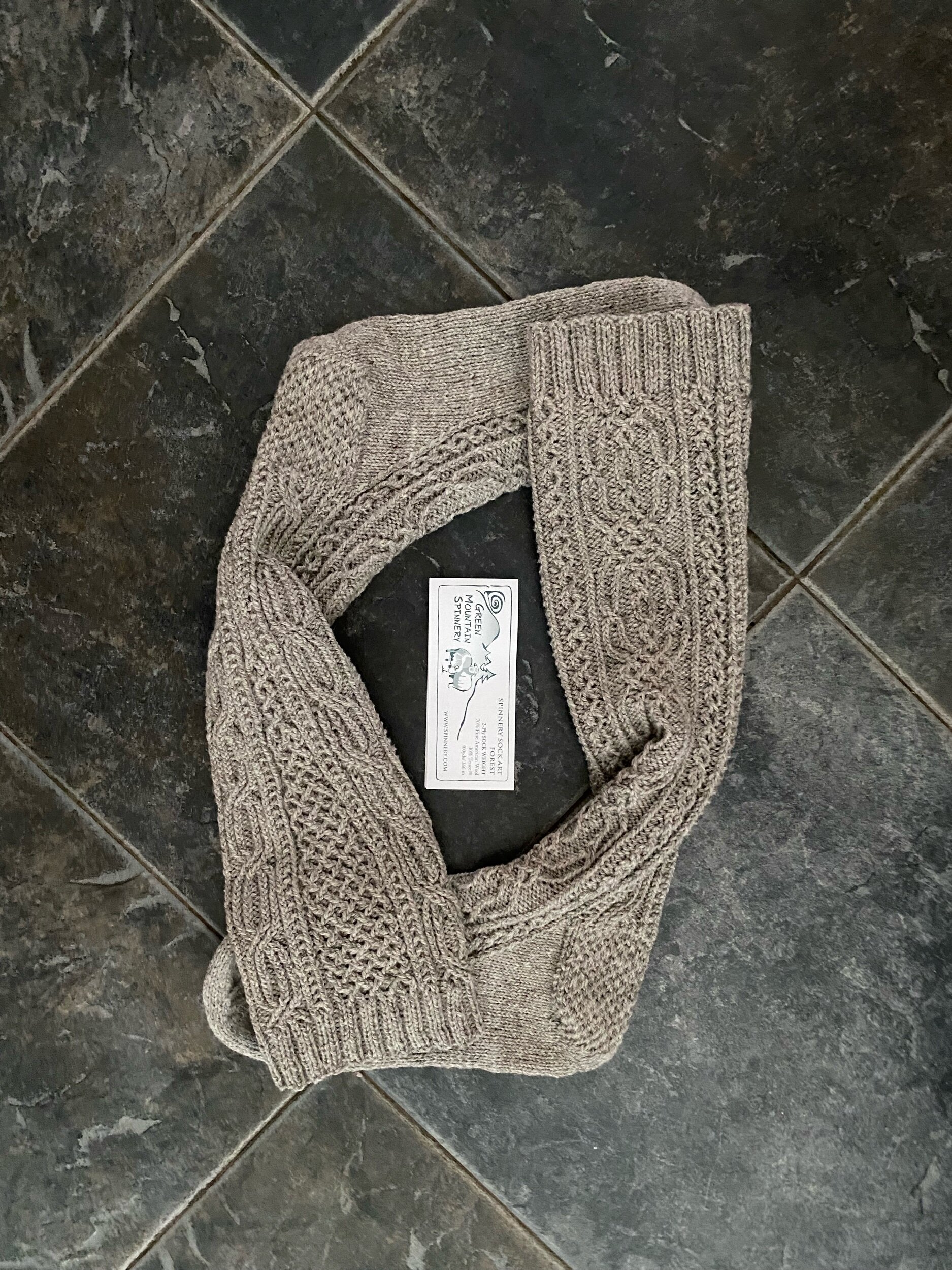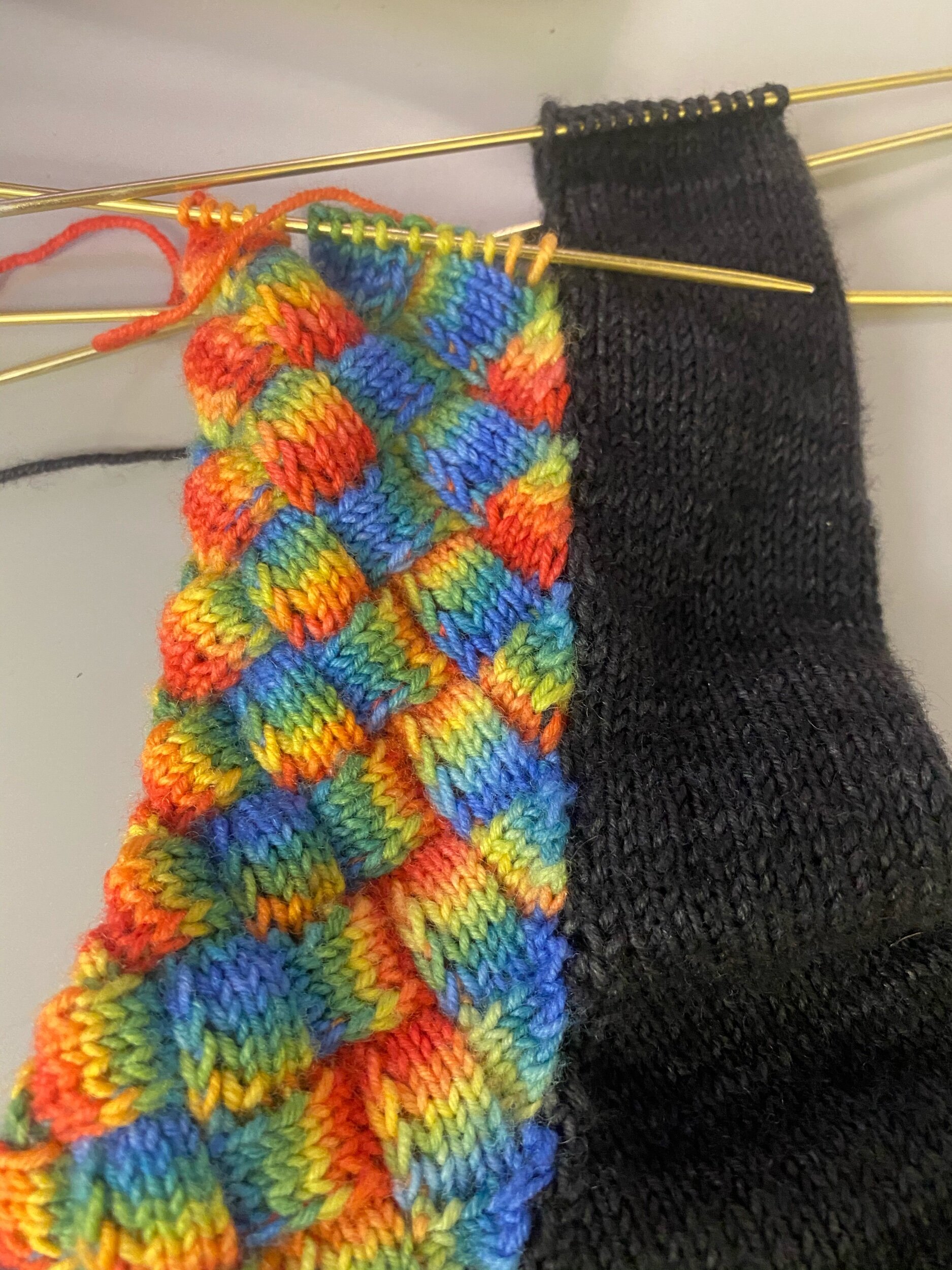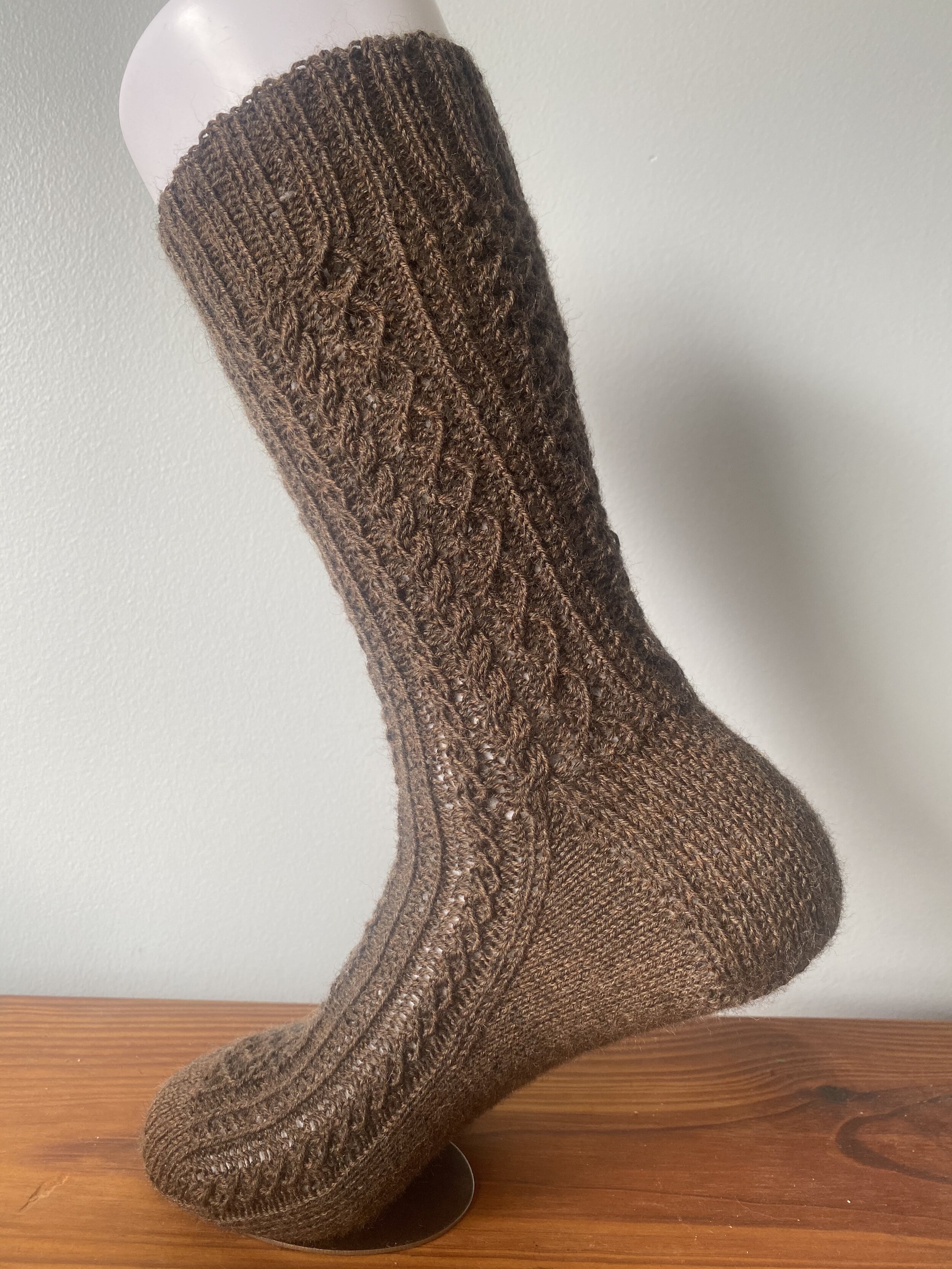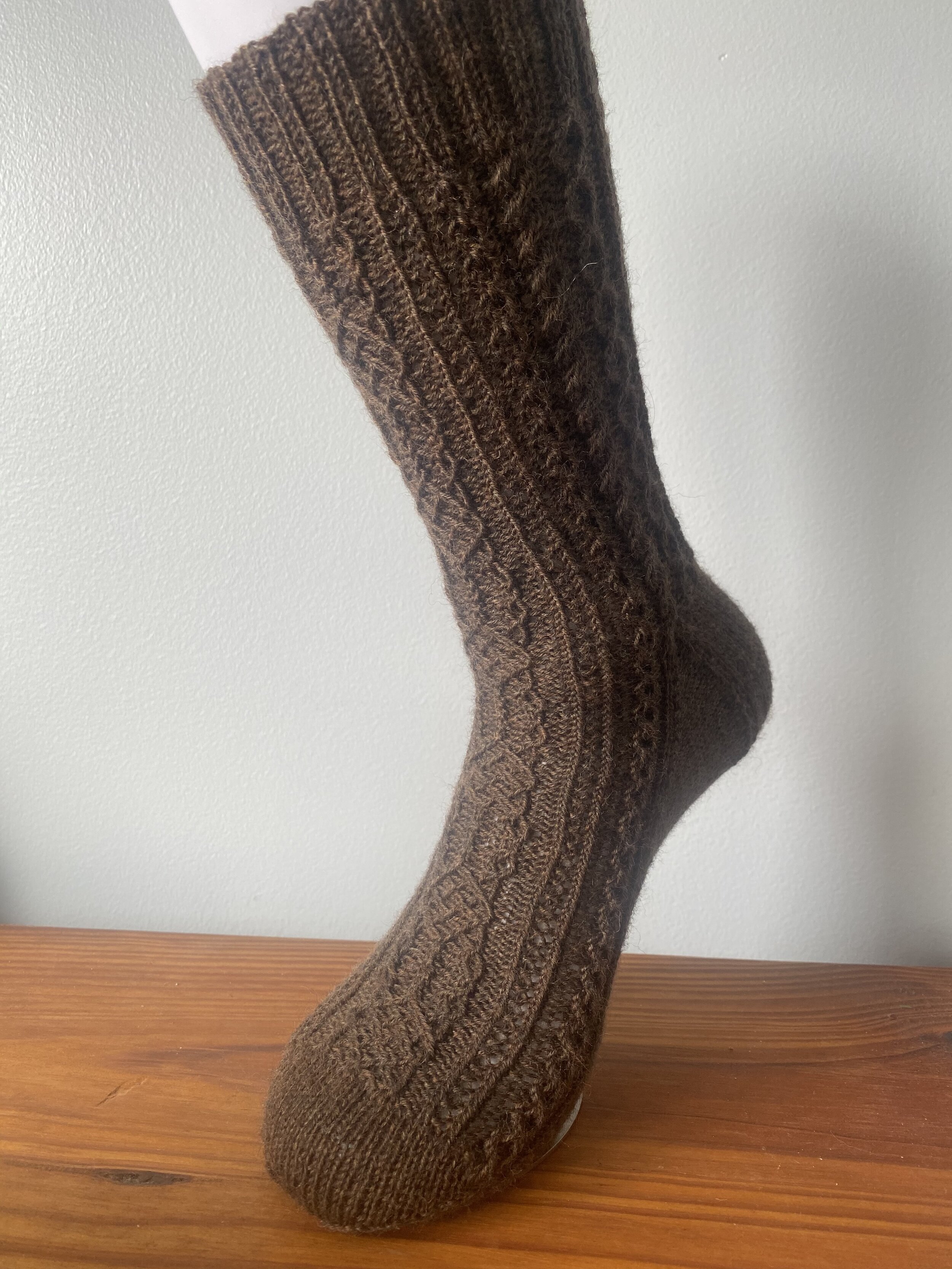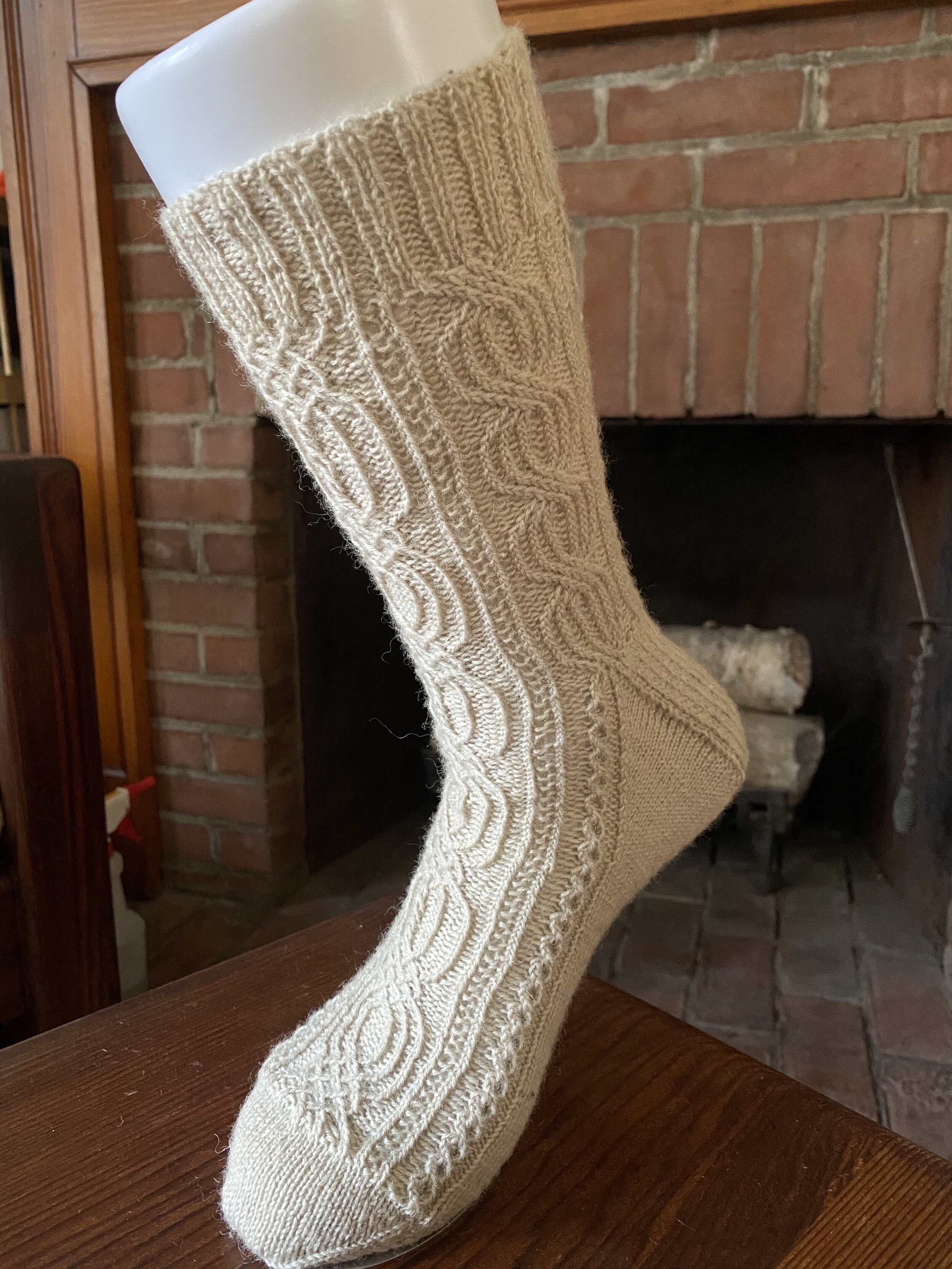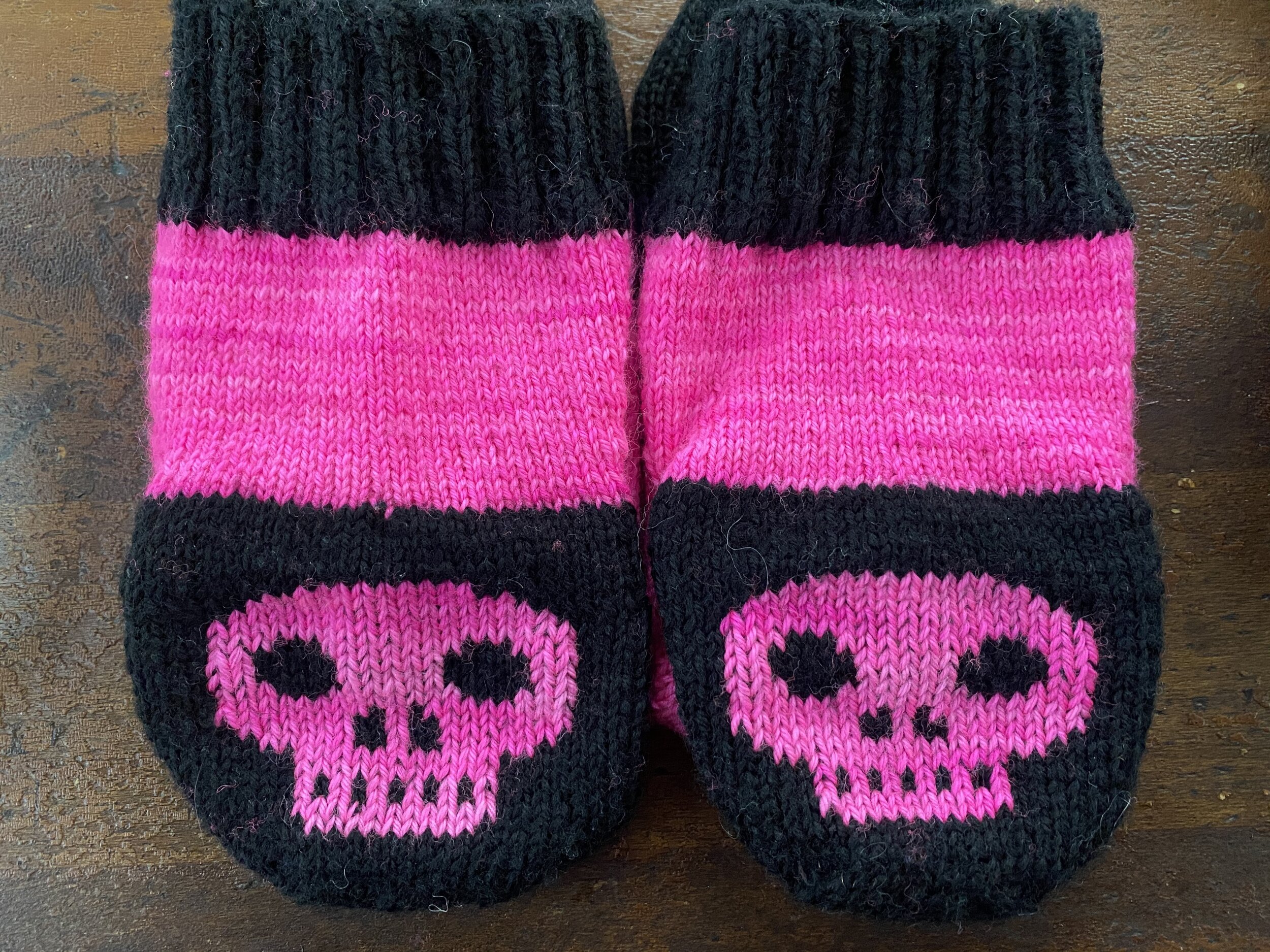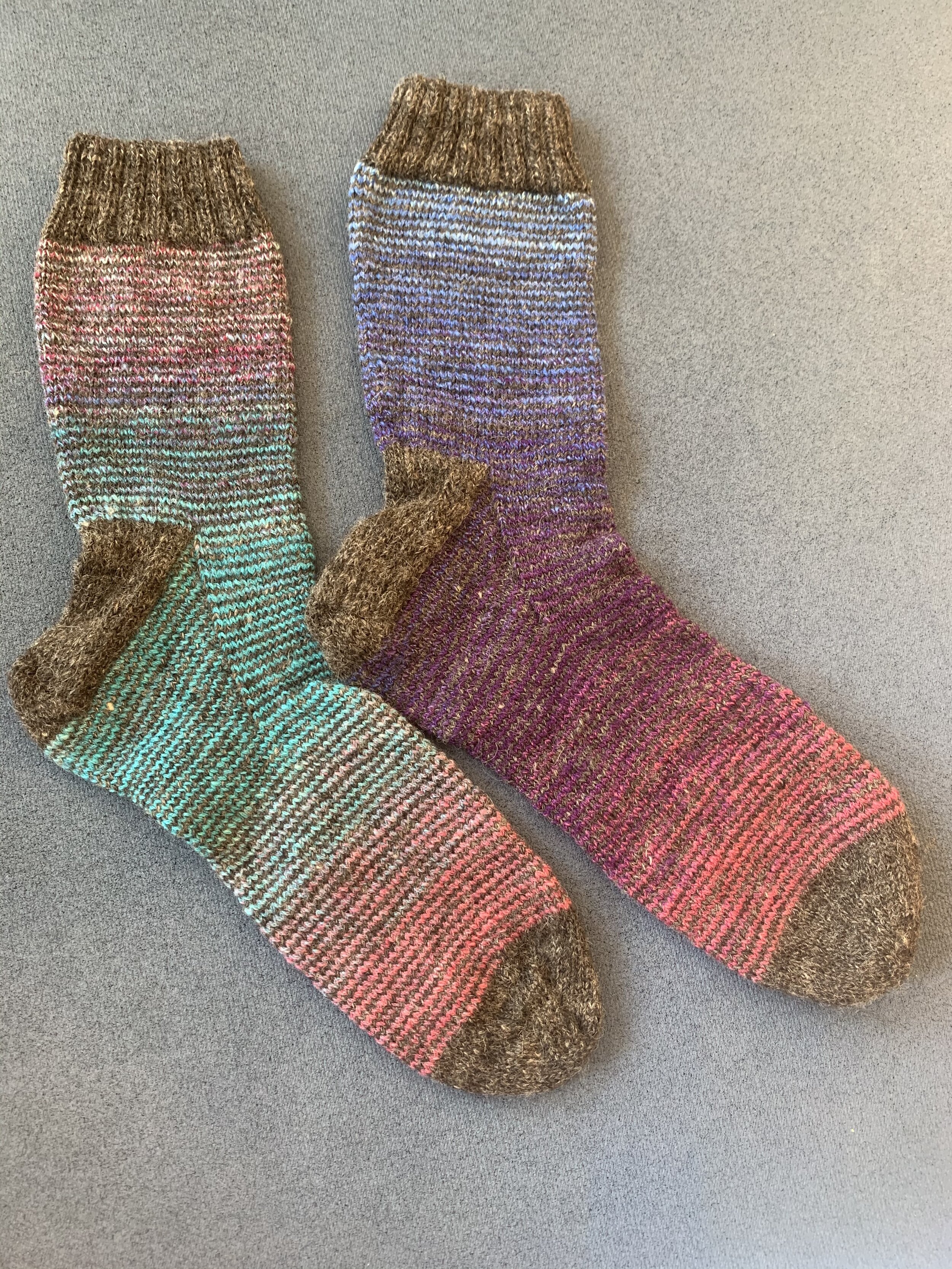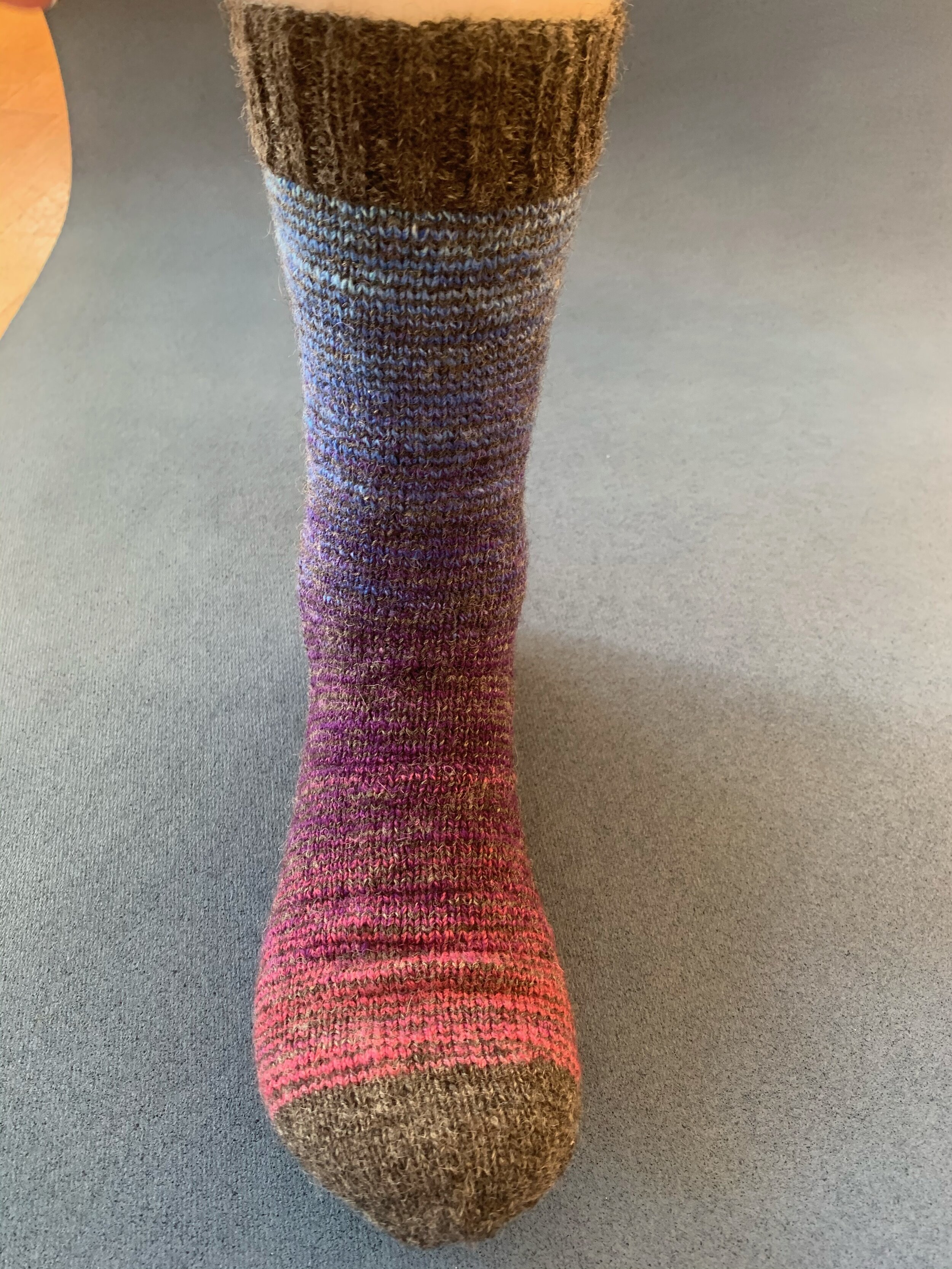Another pair of twisted/traveling stitch knee highs! This was the first pair for a pattern I’m working on writing, that will allow for whatever calf shape you have. This not at all overly ambitious goal has been a bit tricky, but I think I’ve finally figured out all the correct arithmetic… it’s tricky not quite knowing how everyone’s legs are shaped. I have an idea of the range of max calf circumferences, and max ankle circumferences, and I assume the person with the smallest ankle doesn’t have the largest calf, but who knows? How large is the largest calf for the person with the tiny ankles? Hopefully this pattern will be such that everyone can have a well fitted sock.
The yarn for this pair is a heavier fingering weight. It’s the Forest base from the Green Mountain Spinnery, in a lovely natural grey color. The fiber content is a blend of wool and tencel, so it feels different from a standard sock yarn. I was almost done with these socks (working down the foot, doing two at a time) when I realized I would need a second skein. It was listed as out of stock on their website, but happily when I called they still had some in stock! I was super grateful, as this pair of socks needed to be done and given to their new owner before I moved.







